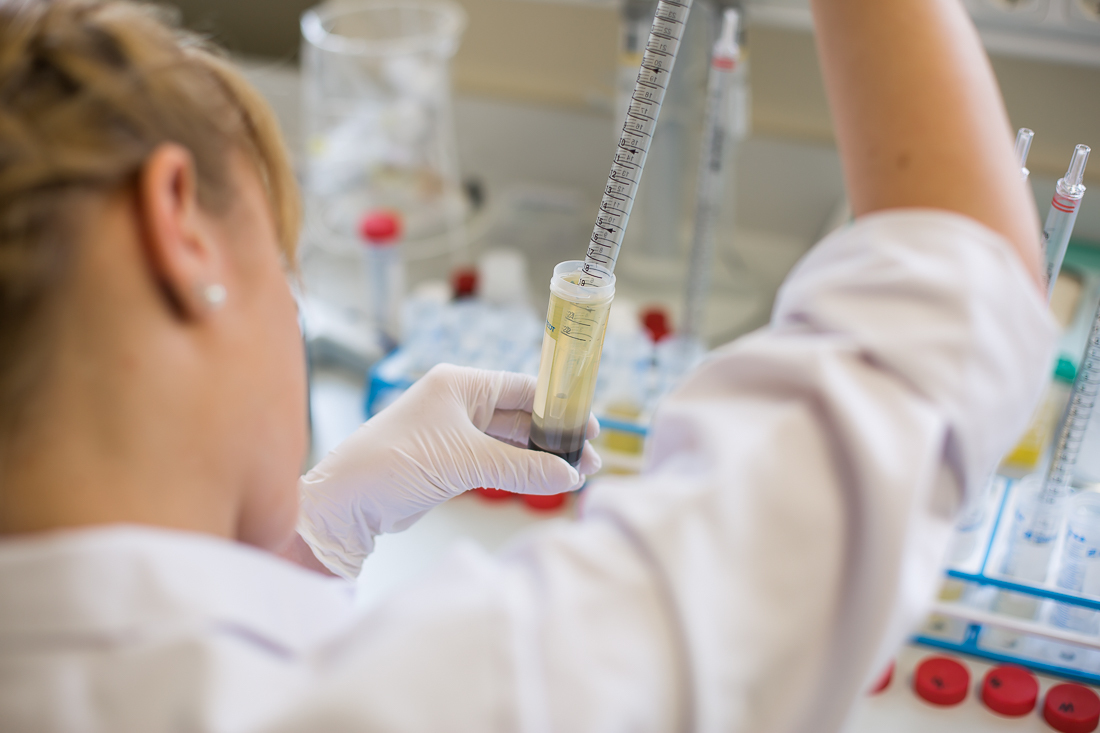Tests
iSpot
De iSpot-test analyseert T-celreacties om inzicht te geven in het cellulaire immuunsysteem, wat cruciaal is voor het diagnosticeren van chronische en opportunistische infecties. Het meet cytokines IFN-γ en IL2 en is relevant voor verschillende infectieziekten, waaronder Borrelia, Anaplasma en SARS-CoV-2. Het heeft als doel een nieuwe diagnostische standaard te zetten.

T-cel immuniteit met de iSpot assay
T-cellen
De primaire functie van T-cellen is het stimuleren van B-cellen door het leveren van specifieke en niet-specifieke cytokines zoals IFN-γ en IL2.
Een antigeen is een stof (meestal vreemd) die reageert met een antilichaam en een immuunreactie kan opwekken. Een grote structuur zoals een eiwit, virus of bacterie bevat veel subregio's die de werkelijke antigeenbepalende elementen of epitopen zijn. Deze epitopen kunnen bestaan uit peptiden, koolhydraten of specifieke lipiden van de juiste grootte en driedimensionale configuratie om de bindingsplaats van een antilichaam of een T-celreceptor te vullen. Wanneer het antigeen het lichaam binnengaat, verbindt het zich met het antilichaam en een T-celreceptor (virussen verbinden zich sterker met antilichamen en bacteriën met T-celreceptoren), en stimuleren T-cellen B-cellen door specifieke en niet-specifieke cytokines te leveren.
iSpot Assay
De iSpot Assay (Enzyme-linked Immuno-Spot Assay) kan T-celreacties op het niveau van individuele cellen detecteren en karakteriseert aldus de immuunrespons van de geteste individuen. De visualisatie van de door T-cellen geproduceerde cytokines, gestimuleerd met specifieke antigenen, biedt een gedifferentieerd beeld van de immuunrespons om de ziekteprogressie te volgen en de cellulaire immuniteit na infectie te bepalen.
IFN-γ and IL2
De i-Spot-test is gebaseerd op de variabiliteit in correlatie met het aantal geactiveerde T-cellen en respectievelijk de uitgescheiden IFN-γ en IL2.
De IL-2 cytokine
IL-2 is een 15,5 kDa cytokine dat uitgescheiden wordt door antigeen-geactiveerde T-cellen. Oorspronkelijk geïdentificeerd als een T-celgroeifactor, staat IL-2 nu bekend om een breed scala aan acties, waaronder het vermogen om de cytolytische activiteit van NK- of lymphokine-geactiveerde killercellen te versterken, de cytolytische activiteit van tumor-infiltrerende lymfocyten (TIL's) te verhogen, de productie van immunoglobulinen door geactiveerde B-cellen te verhogen, de homeostatische proliferatie van regulatorische T-cellen te handhaven, in te werken op aangeboren lymfoïde cellen en de differentiatie van effector T-cellen te moduleren, evenals acties op geheugen T-cellen, effector T-cellen en monocyten. Over het algemeen vertegenwoordigt IL-2 de geheugenfunctie van het immuunsysteem en dus de herstelperiode.
De IFN-γ cytokine
IFN-γ is uitgegroeid tot een uiterst veelzijdig cytokine dat talloze biologische activiteiten kan uitvoeren die niet redundantie vertonen met andere interferonen. IFN-γ wordt geassocieerd met een acute of actieve infectie. De literatuur staat bol van rapporten die het belang ervan bij ziektepathologieën benadrukken. Bijgevolg verstoort elke tekortkoming in het IFN-γ-IFN-γR-systeem de immuunrespons van de gastheer op infecties ernstig. De relevantie ervan met betrekking tot het bieden van beschermende immuniteit tegen infectieziekten en kankers is dan ook onbetwistbaar. Talrijke ontwijkingsstrategieën zijn door pathogenen ontwikkeld om de remmende effecten te overwinnen en de bescherming die door IFN-γ wordt geboden te omzeilen. IFN-γ wordt geassocieerd met een acute of actieve infectie, terwijl IL-2 de geheugenfunctie van het immuunsysteem vertegenwoordigt en dus herstel vertegenwoordigt.
De relatie tussen de IFN-γ en IL-2 respons maakt een gedifferentieerde uitspraak over de immuunstatus tijdens en na infectie mogelijk. Zo is de i-Spot 2-kleurige EliSpot-test een universele oplossing voor het bepalen van de immuunstatus van zowel actieve infecties als infecties die al langere tijd aanwezig zijn.
De Enzyme-linked Immuno-Spot Assay-techniek belooft de nieuwe gouden standaard te worden voor verschillende toepassingen op het gebied van infectieziekten, voor vragen in de auto-immunologie, voor transplantatiediagnostiek, allergie (therapie monitoring) en voor vaccinatiestudies.
Referenties:
Mitra S, Leonard WJ. Biology of IL-2 and its therapeutic modulation: Mechanisms and strategies. J Leukoc Biol. 2018 Apr;103(4):643-655. doi: 10.1002/JLB.2RI0717-278R . Epub 2018 Mar 9. PMID: 29522246 .
Kak, Gunjan, Raza, Mohsin and Tiwari, Brijendra K. "Interferon-gamma (IFN-γ): Exploring its implications in infectious diseases" Biomolecular Concepts, vol. 9, no. 1, 2018, pp. 64-79.
Janetzki, S., M. Rueger, and T. Dillenbeck, Stepping up ELISpot: Multi-Level Analysis in FluoroSpot Assays. Cells, 2014. 3(4): p. 1102-15.
